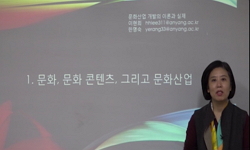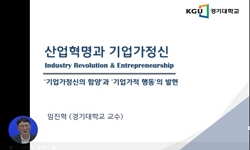Korea began its deep sea water industry in earnest in 2008, and as of 2023, it has reached 15 years of in-dustrial history. So far, the deep sea water industry has achieved significant growth in quantitative terms. This situation is reflected in intui...
http://chineseinput.net/에서 pinyin(병음)방식으로 중국어를 변환할 수 있습니다.
변환된 중국어를 복사하여 사용하시면 됩니다.
- 中文 을 입력하시려면 zhongwen을 입력하시고 space를누르시면됩니다.
- 北京 을 입력하시려면 beijing을 입력하시고 space를 누르시면 됩니다.

국내 해양심층수 산업에 대한 고찰 -법제도 개선과 시장 변화를 중심으로- = Research and implications of the deep sea water industry in Korea :Focusing on legal system improvement and market changes
한글로보기https://www.riss.kr/link?id=A108848897
-
저자
주현희 (한국해양과학기술원)
- 발행기관
- 학술지명
- 권호사항
-
발행연도
2023
-
작성언어
Korean
-
주제어
해양심층수 ; 개발 ; 해양심층수 활용 ; 산업 ; 산업구조 ; 정책방향 ; Deep Sea Water ; Development ; Utilization of deep sea water ; Industry ; Industrial structure ; Policy direction
-
등재정보
KCI우수등재
-
자료형태
학술저널
- 발행기관 URL
-
수록면
432-443(12쪽)
- DOI식별코드
- 제공처
-
0
상세조회 -
0
다운로드
부가정보
다국어 초록 (Multilingual Abstract)
Korea began its deep sea water industry in earnest in 2008, and as of 2023, it has reached 15 years of in-dustrial history. So far, the deep sea water industry has achieved significant growth in quantitative terms. This situation is reflected in intuitive indicators such as increase in sales, number of companies, regional distribution of companies, and increase in number of products. In particular, the current growth stage of the deep sea water industry is diagnosed as having settled into the growth stage. This achievement of in-dustrial growth can be seen as the result of various national policies and technical support promoted to expand the market and industrial revitalization, as well as the efforts of the industry. In particular, the re-vision of the「Deep sea water Development and Management Act」 and support for technology develop-ment through R&D implemented after 2008 are evaluated to have played a significant role in expanding the scope of the deep sea water industry and creating a consumer-centered industrial environment. How-ever, behind these positive results and evaluations, there are also limitations and challenges. First of all, the industrial structure centered on the production of drinking water has continued since the early days of the industry, and the entry of new companies is minimal, which is a limitation of the deep sea water in-dustrial ecosystem. Another is the dynamic structure of the management system intertwined with the「Drinking Water Management Act」,「Korea Food Code」, and「Salt Industry Promotion Act」. This appears to be acting as a structural limitation in the company's ability to pioneer new markets and pro-duce high value-added products. 2023 is the year in which the 4th deep sea water basic plan is es-tablished, and it is important to objectively evaluate and diagnose the domestic deep sea water industry and set a future-oriented policy direction by considering the changing environment. In particular, policy directions and detailed strategies will be needed to consider the use of deep sea water across primary, secondary, and tertiary industries should be considered. also policy directions and detailed strategies are needed to improve the concentrated industrial structure, advance the deep sea water industry into new markets, and encourage new companies to enter the deep sea water market. This paper examines the domestic deep sea water industry and presents policy directions that must be prerequisite for diversifying the use of deep sea water and securing the competitiveness of the industrial ecosystem in the future.
동일학술지(권/호) 다른 논문
-
- 한국해양환경·에너지학회
- 조형찬
- 2023
- KCI우수등재
-
XAI를 활용한 특별관리해역의 연안오염총량관리제 오염물질 대상항목 선정 및 해양오염 관리 방안 도출
- 한국해양환경·에너지학회
- 김세상
- 2023
- KCI우수등재
-
이산화탄소 해양지중저장에서 심해환경을 고려한 생물영향평가
- 한국해양환경·에너지학회
- 최태섭
- 2023
- KCI우수등재
-
대한민국의 청정 해운을 위한 태양광 시스템 제어 기능을 갖춘 전기 추진 선박의 실효성
- 한국해양환경·에너지학회
- 박치병
- 2023
- KCI우수등재




 DBpia
DBpia






